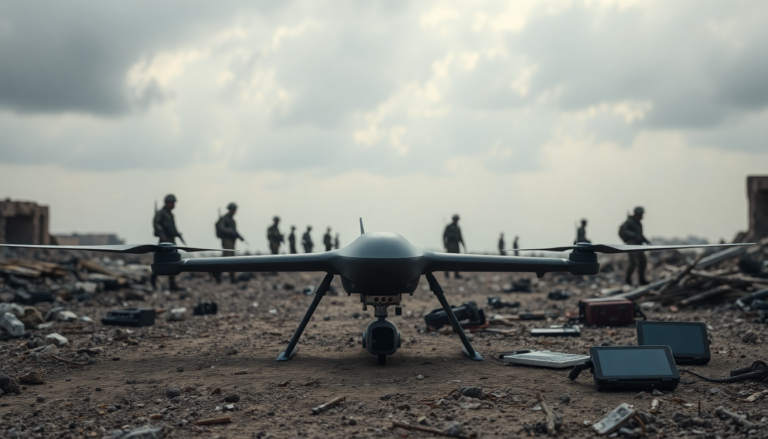Argomenti trattati
As modern warfare continues to evolve, the role of cyber operations has become increasingly crucial for military forces. A recent attack on the Gaskar Group, a key supplier of drones for the Russian military, underscores the complexities of this new battleground. While Gaskar Group has downplayed the cyberattack’s impact, Ukrainian intelligence claims otherwise, signaling a pivotal moment in the ongoing conflict. How do these digital skirmishes influence the larger tactical landscape?
The Dynamics of Cyber Warfare
Cyber warfare is fundamentally changing how conflicts are fought, especially in the context of the Ukraine-Russia war. The attack linked to a coalition of Ukrainian hacktivist groups, including BO Team and the Ukrainian Cyber Alliance, illustrates how technology can serve as both a weapon and a disruptor. Reports suggest that these groups successfully infiltrated Gaskar Group’s network, leading to the destruction of a staggering 47 terabytes of vital data necessary for drone production. What does this mean for the future of military engagements?
The implications of such cyberattacks are significant. Disrupting the supply chain for unmanned aerial vehicles (UAVs) can severely impede military operations. In a conflict where drones play a pivotal role, crippling a supplier’s infrastructure can provide a considerable tactical edge. The landscape of warfare has indeed shifted towards the integration of drones, transforming them from mere reconnaissance tools into powerful instruments of combat.
The Role of Drones in Modern Warfare
The historical use of drones in military operations has come a long way. Initially, UAVs were primarily designed for surveillance and targeted strikes, used mainly by advanced military forces like the United States. However, the ongoing conflict between Ukraine and Russia has brought to light a fascinating shift: even hobby-grade drones are now being repurposed for military objectives. Reports indicate an unprecedented scale of drone deployment in this war, showcasing their effectiveness in modern combat. Isn’t it incredible how technology can reshape battlefields?
Operations like “Operation Spiderweb” exemplify the innovative tactics employed by Ukrainian forces, as they leverage drones to carry out complex strikes against Russian military assets. As both sides continue to adapt and innovate, the battlefield is increasingly defined by the ability to effectively utilize drone technology. The cyberattack on Gaskar Group serves not just as a tactical maneuver but also as a strategic effort to undermine the enemy’s aerial capabilities.
Future Implications and Strategic Considerations
The ramifications of cyberattacks on military suppliers extend far beyond immediate tactical victories. They prompt critical questions about the resilience of supply chains in modern warfare and how these vital systems can be protected against such incursions. For nations embroiled in conflicts, safeguarding critical infrastructure has never been more important. The reported outcomes of the Gaskar Group attack highlight the potential for significant operational paralysis in military capabilities. How can countries adapt to this new reality?
Looking ahead, it’s clear that cyber warfare will continue to play a pivotal role in military strategies. We can expect nations to invest heavily in securing their technological assets while simultaneously enhancing their offensive cyber capabilities. As drone technology advances, the methods to disrupt and defend against it will evolve as well, leading to an endless cycle of innovation and counter-innovation in military operations.
Conclusion
The intersection of cyber operations and military technology, as illustrated by the Gaskar Group incident, reflects a broader trend in contemporary warfare. As conflicts increasingly incorporate cyber elements, understanding their implications becomes vital for military strategists and policymakers alike. The transformation of drones from basic tools to essential components of military strategy highlights the urgent need for adaptive responses to emerging threats in the digital arena. Are we ready for the new era of warfare?

